
Cloudeight InfoAve Weekly
Issue #1151
Volume 23, Number 2
October 31, 2025
Dear Friends,
Happy Halloween! Be kind to all the little goblins!
Welcome to Cloudeight InfoAve Weekly Issue #1151. Thank you for subscribing and for being a part of our Cloudeight family. We appreciate your friendship and support very much! Please share our newsletters and our website with your friends and family.
If you're not getting our InfoAve Daily newsletter, you're missing out on a lot of good stuff!
It's free and it only takes a few seconds to sign up. We'd love to have you with us. Visit this page to sign up for our Cloudeight InfoAve Daily Newsletter.
We gladly help everyone who writes every day by answering
their questions and helping to solve their computer problems. Please
help us continue to do that! ![]()
Make a small donation and help us help you!
If you don't need any of our products or services right now, please help
us with a donation. Even the smallest gift is appreciated. Every
donation helps us to provide useful information that helps you with your
computer as well as helps us to keep you safe on the Internet. We offer
free help to thousands of people every year... and we offer an honest
and inexpensive computer repair service too. We do everything we can to
help you with your computer and keep you safe too.
So if you don't need any of our products or services right now,
please help us by making
a donation right now.
Interested in making a monthly gift?
Visit
this page. Help us keep helping you!
Thank you so much for your support!
![]()

Rona
doesn't
want all
that AI
stuff
that's
coming
to
Windows
11
Hi TC &
Darcy.
Thank
you
again
for
assisting
me with
my
inquiry
recently. I agree
with
your
comment
about
people
thinking
for
themselves
and not
relying
on AI.
I am 89
years of
age and
do not
want to
be told
what to
do while
I can
still
think
for
myself
and make
my own
decisions.
It
really
annoys
me when
AI tries
to take
over
what I
am
doing,
so I am
really
hoping
we will
be able
to
uninstall
Copilot
to save
our
sanity.
I do not
like
talking
to my
computer
either -
is there
nothing
private
anymore?
Kind
Regards,
Rona
Our
answer
Hi
Rona. When
Microsoft
starts
adding
all
those AI
features
to
Windows
11,
we'll
publish
a
tutorial
on how
to get
them off
your
computer
- so
don't
worry.
For now,
all of
those AI
features
are
still in
testing
and
possibly
weeks or
months
away
from
being
generally
available
on
Windows
11.
Don't
worry so
much!
Mikeal worries about being scammed and asks about Guardio
My wife has been receiving message,as it seems someone is trying to get a security code into her account. She is receiving that access code in her messages. She has suggested looking into GUARDIO to help. With the trust I have in you both, from all the help you've given all of us on the internet, and the great insights to help us stay safe. Any insights you could provide to thwart this from escalating into something none of us wants to be caught up in? Thanks and many blessings to you both, and hope you're doing well. Mikeal.
Our answer
Hi Mikeal. We consider Guardio borderline scamware for many reasons. One of which is its aggressive marketing and creating a sense of false urgency. Guardio often markets itself via aggressive pop-up ads, online banners, and sometimes through sponsored content on popular channels (like YouTube). These ads often mimic system alerts or present alarming "scan results" claiming your browser has a dangerous number of malicious extensions, data leaks, or threats. This tactic is designed to create fear and urgency, pressuring users into signing up for the paid service, which is a common tactic of questionable software.
Linda wants to make a fishing certificate for a contest
This is a silly question, but I want to make a fishing award certificate for the first child who catches a fish in their new fishing boat. Would you have any idea of a free site that I can make one up? Or maybe a free image I could use in my Microsoft Publisher program? Love you guys!
Our answer
Hi Linda. You can use Copilot. It's on every Windows 10 and 11 computer. To generate an image, write a prompt like:
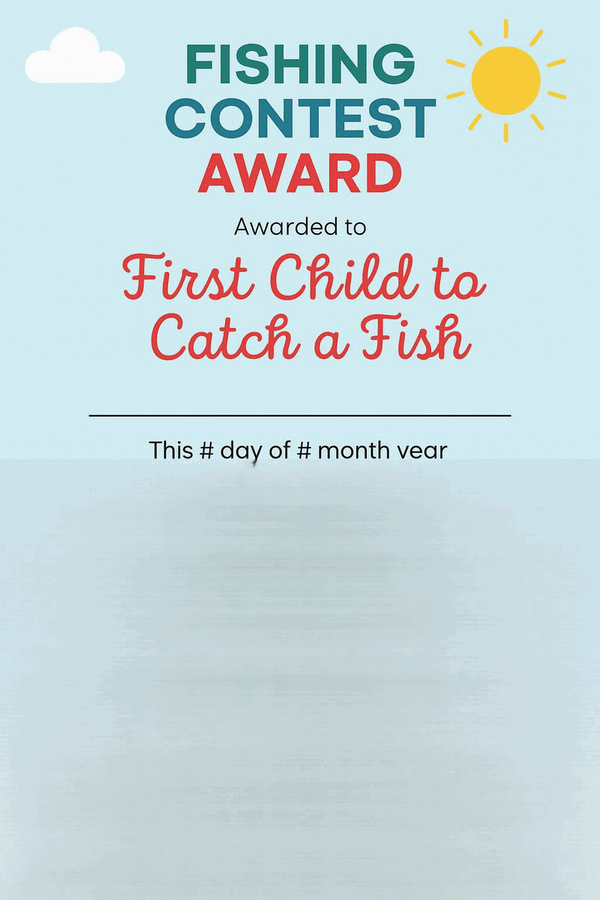
![]()
We can fix your Windows computer... check out our low prices here!
![]()
![]()
Our answer
Hi Brenda. Thanks so much, glad to help.
![]()
Hi Guys...Somehow, my Rename function that has always been on my right-click menu is gone. I would like to be able to rename files and folders again. I hope you can help me...Larry
Since you're using Windows 11, did you try holding down the Shift key when you right-click on a file or folder? Windows 11's right-click menu is truncated, so you need to click "Show more options" at the bottom of the right-click menu to see "Rename," or easier yet, just hold down the Shift key as you right-click to see the full context menu.

Now available: Reg Organizer 9.40
If you purchased or renewed Reg Organizer through Cloudeight within the
last 12 months, you're entitled to a free version upgrade to Reg
Organizer 9.31. Works great with Windows 10 and Windows 11.
Save $14 on Reg
Organizer right now!
Reg
Organizer - A Swiss Army Knife of Windows Tools - Works Great on Windows
10 and Windows 11.
![]()

Get That New PC Feeling Without Buying a New Computer
Windows 10 / Windows 11

The number one complaint we hear most often is “My computer is so slow“. And while there are many things you can do to help speed up your PC, if it doesn’t have enough RAM, it’s not going to be fast.
Why will your computer be slow if it doesn’t have enough RAM?
One reason why insufficient RAM can cause your computer to run slowly and programs to open slowly or freeze is because of the way Windows is designed. When your computer runs low on RAM (Random Access Memory) it increases available memory by using virtual memory. Virtual memory uses free hard drive space to create additional memory. And even if your PC has an SSD (Solid State Drive) virtual memory is slower than installed RAM. And if your computer has a traditional hard drive (HDD) virtual memory is very much slower than RAM.
A lesson from EB from back in the Windows 95 era is still valid today
I can remember when I first met EB my PC had 16 MB (that’s right, MEGABYTES) or RAM it was constantly timing out, crashing, and was just awful to use. EB told me the best thing I could do is add more RAM. She directed me to Crucial.com and told me how to find the right RAM for my PC. I bought 64 MB of RAM (the maximum for that PC). When it came I was so afraid to install it. There were warnings about static electricity that I read about and I was scared I was going to blow up that computer. Luckily, the RAM came with a “how to install” guide. I held my breath, EB walked me through the installation and when I was done I turned my computer on, and WOW! Amazing! It was so fast it seemed like a new computer.
Ever since then, I (and EB) have been proponents of RAM. Having enough RAM is the best way to ensure your computer is fast. And if you’re one of the many who are contemplating buying a new computer, maybe you can save your money and upgrade your computer’s RAM.
I can’t tell you the number of PCs I’ve worked on that had only 4 GB of RAM, but there have been many. And when a computer is slow even after I’ve cleaned and optimized it, then I know – even without looking – that the computer does not have enough RAM.
4GB of RAM is not enough for a Windows PC, no matter what anybody tells you… 8GB of RAM is the bare minimum, and we recommend 12 to 16GB
No matter what Microsoft, HP, Dell, ASUS, Acer, Lenovo, and all the others say, 4GB is not enough RAM. You should have at least 8GB of RAM, preferably 12GB or 16 GB. However, 8GB is the minimum RAM you should have if you want your computer to be “fast”.
How to find out how much RAM your computer has
Two easy ways to find out how much RAM you have:
Type ABOUT YOUR PC in the Taskbar search and press Enter. Look for “Installed RAM”
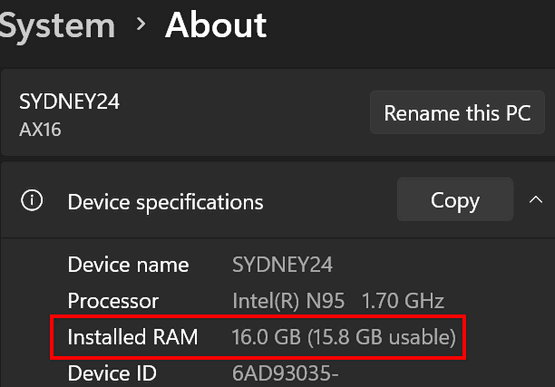
Or press the Windows key +R, type MSINFO into the Run box, and press Enter. Look for “Installed Physical Memory”…

The maximum amount of RAM your computer can use depends on the motherboard. So, how do you find out how much RAM your computer can use? We use Crucial’s system scanner to find out, and you should too.
Crucial is a well-known manufacturer of computer memory and storage devices. They have a tool called the “Crucial System Scanner” that scans your computer and tells you what kind of RAM you need and the maximum RAM you can install on your computer.
When you visit Crucial.com, you’ll see something like this…


Get that new PC feeling
Does your slow PC need a boost? Millions of customers have trusted the Crucial System Scanner to find memory and storage upgrades. In minutes, learn how much memory and storage your PC or Mac can support, then buy 100% guaranteed compatible upgrades with confidence.
If you have less than 8GB of RAM and want to add RAM to your computer, run the Crucial System Scanner and wait a couple of minutes for the scan results.

After the scan completes, you’ll see the type of RAM you need and the maximum RAM your computer can use.
In my case, the maximum RAM that one of my computers can handle is 12 GB. But since I have only one RAM slot to use (because 4GB is not removable) I can replace one 4GB RAM chip with an 8 GB RAM chip to bring my total RAM to 12 GB.
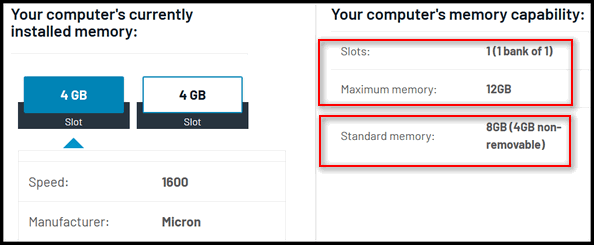
Most of the time, Crucial will have the RAM you need in stock and ship it to you for free. In this case, Crucial didn’t have the RAM I needed (it was out of stock), so Crucial gave me several alternatives. I chose Newegg because I’ve purchased from them before and I’ve been satisfied.

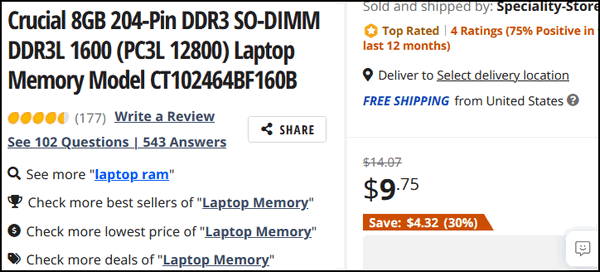
Surprisingly, the 8GB RAM chip for my eight-year-old ASUS was less than $10 with free shipping! But let’s be honest… RAM normally costs more than that. But you can be sure that you’re going to spend a whole lot less on RAM than you will on a new computer. Most times, RAM for newer computers will cost between $35 and $100, depending on the amount of RAM and the type. And Crucial always gives you free shipping.
Now you’re wondering how hard it is to install. It’s not hard at all. If you can use a screwdriver, you can install RAM. Crucial sends step-by-step[ installation instructions with the RAM. And there are dozens of YouTube videos showing how easy it is to install RAM.
Whether you're using Windows 10 with security updates or Windows 11, and your computer is not as "fast" as it should be, you don’t need to go out and buy a new computer, but you might want to add more RAM. And if you have a computer with Windows 11 that came with only 4 GB of RAM, do yourself a favor and add at least 4GB of RAM to it. You’ll be glad you did. And if it came with 8GB of RAM, consider upgrading to 12GB or 16GB of RAM.
You can get that new computer feeling without the new computer cost by adding more RAM.
Just so you know…We are not affiliated with Crucial.com, and we do not receive a commission or any compensation from them. We have used them many times, and we have been very satisfied with their products and their service.
Thanks for reading!
More Quick and Easy Windows Tips for You
Windows 10 / Windows 11
I don’t think anyone appreciates the quick and easy tips more than we do. We spent endless hours on the web when the Internet was new and everyone connected to the ‘net with a loud, squealing telephone modem. How many of you remember that awful, yet comforting sound? Here are 3 tips we think you’ll find easy and very useful.
Use the mouse and the Shift key to select text
Most of you know you can select files and folders by holding the Shift key and clicking on the first and then the last file/folder. But this also applies to selecting text in documents like MS Word docs, text files, and Web pages.
All you have to do is click on the first character in the text you want to copy, then point to the last character, click, and release the shift key. All the text between the first click and the last click is selected. Now press CTRL + C to copy the selected text and CTRL+V to paste it wherever you want…like a Word doc, email, or a text file.
Maximize any program with a double-click
Instead of fumbling around looking for the maximize button between the – and the X in the top-right corner of program and file windows, just double-click anywhere on the title bar to maximize the window. The title bar is the topmost part of the program window and usually contains the program name.
Quickly find recent downloads
While using your favorite browser, use the CTRL + J keyboard shortcut to see your recent downloads. We can’t tell you how often we’ve used this simple trick to instantly open the downloads folder when looking for a recent download.
![]()
Meet Mico, the Modern-Day Clippy
Windows 11

Windows 11 users, you’re in for a treat!
An old friend of mine always reminded me that… “The more things change, the more they remain the same”. It’s amazing how often this adage is so true.
Remember Clippy? That animated paperclip from older versions of Microsoft Office, known for its enthusiastic but often ill-timed offers of assistance? He was a digital companion that elicited strong reactions, from nostalgic affection to mild frustration. Sometimes, even outright anger. For better or worse, Clippy left a lasting impression on a whole generation of computer users.
For those who appreciate the evolution of digital assistants, prepare for the next iteration of ambient “help”: introducing Mico!
Mico, short for “Micro-Interactive Co-pilot,” is designed to be a subtle, yet ever-present, guiding hand in your digital workspace. The developers describe him as a “Mindful Intelligent Companion,” aimed at enhancing productivity through non-verbal communication.
What is Mico? Mico manifests as a dynamic, AI-powered holographic mime, appearing unobtrusively in the corner of various applications. Unlike vocal assistants, Mico communicates entirely through expressive gestures and pantomime, aiming for a less intrusive, visually-driven interaction. He she
The Philosophy Behind the Mico Mime
The choice of a mime is explained as a way to “promote an intuitive, less disruptive user experience.” The idea is that visual cues can be universally understood and less jarring than spoken interruptions.
If you’re formatting text, Mico might appear to perform a brief, elegant gesture highlighting the relevant toolbar icon. The intent is to draw attention subtly without breaking your concentration with sound.
When dealing with complex tasks, Mico is programmed to offer visual cues that might guide you through steps. For example, during data entry, he might mime a reassuring gesture or subtly point towards the next field, anticipating your needs.
Should you pause a task, Mico might perform a silent, motivational gesture, symbolizing focus or progress. The aim is to provide unobtrusive encouragement without explicitly dictating any particular action.
Mico is engineered to integrate across various platforms, from word processors to collaborative project management tools. His presence is intended to be adaptive, learning from your habits to offer more relevant, though still silent, support.
While Clippy was a product of his time, Microsoft says that Mico represents a step forward in exploring how AI can offer assistance in a non-verbal, visually-centric manner. Whether this approach proves to be more effective or less distracting than the oft-annoying Clippy remains to be seen. But for those who do remember Clippy, Mico offers a whole new perspective on how AI-guided digital tools can interact with us — and perhaps a bit of nostalgia too.
If you weren’t a fan of Clippy, you probably won’t be a fan of Mico. And if you don’t remember Clippy at all, don’t feel bad – Clippy was banished by Microsoft long, long ago, when Darcy and I were still kids in our 40s and 50s. Time flies, my friends!
Ready or not, Mico is coming to a computer near you!
Want more tips, tricks, and information?
We have thousands of Windows tips, tricks, and more on our InfoAve website.
Subscribe to our free InfoAve Daily newsletter.![]()

THANK YOU FOR HELPING US!
When you support us with a small gift, you help us continue our mission
to keep you informed, separate the truth from the hyperbole, and help
you stay safer online. Plus, our computer tips make your computer easier
to use.
Did you know that we provide support to thousands of people? Every week,
we help dozens of people via email at no charge. The questions and
answers you see in our newsletters are from the email answers and help
we provide to everyone free of charge.
Thanks to your gifts, we do a lot more than provide this free newsletter. We help you recognize online threats, fight for your online privacy, provide you with the knowledge you need to navigate the Web safely, provide you with suggestions for safe, free software and websites, and help you get more out of your PC.
Please help us keep up the good fight with a small gift.
Interested in making an automatic monthly gift? Visit this page. Help us keep helping you... and help us keep you safe on the Web
![]()

When in Doubt, Check it Out with VirusTotal
VirusTotal is a Cloudeight Site Pick
We have featured VirusTotal before, but it’s time to remind you of what an important resource VirusTotal is. You can check any file or URL using VirusTotal to make sure the file or URL is safe.
Many times, we receive emails from people asking us if a download is safe. We are familiar with a lot of software, but we are not familiar with every program or app you may want to install. If we recommend something, we tested it and found it to be safe. Wwe also make sure the site we send you to download the software is safe.
We use Emsisoft on all our computers, but we never know what someone else is using… it could be AVG, Avast, McAfee, TrendMicro, Norton, or some other antivirus. And sometimes someone using one of the others (not Emsisoft) will write us and tell us their security software found a problem with a file or program we recommended.
So, how do we know the file is safe, even if some antivirus software says it isn’t? We use VirusTotal to scan the file with more than 70 different scanners to determine if a file is safe, whenever we have the slightest doubt. The last thing we’d ever want to do is not be certain before we recommend something to you.
VirusTotal is free, and it’s easy to use. Anyone can use it. You can upload a file to VirusTotal. You can upload a file from your computer to VirusTotal, use a URL (link) to the download file, or you can use the search on VirusTotal to check out a file you’re considering downloading.

Above: VirusTotal is easy to use. You can upload a file from your computer, paste a link to the file, or search for the filename.

Above: VirusTotal scanned this file with over 70 different scanners (including Emsisoft). Two of the scanners found a problem with this file. But none of the others did.
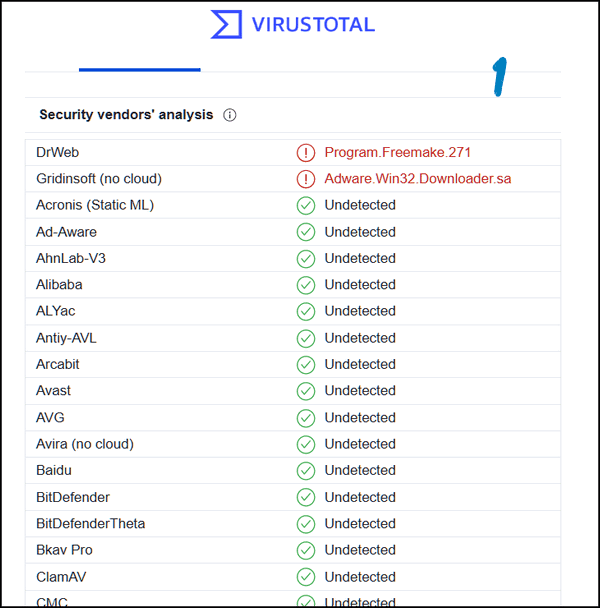
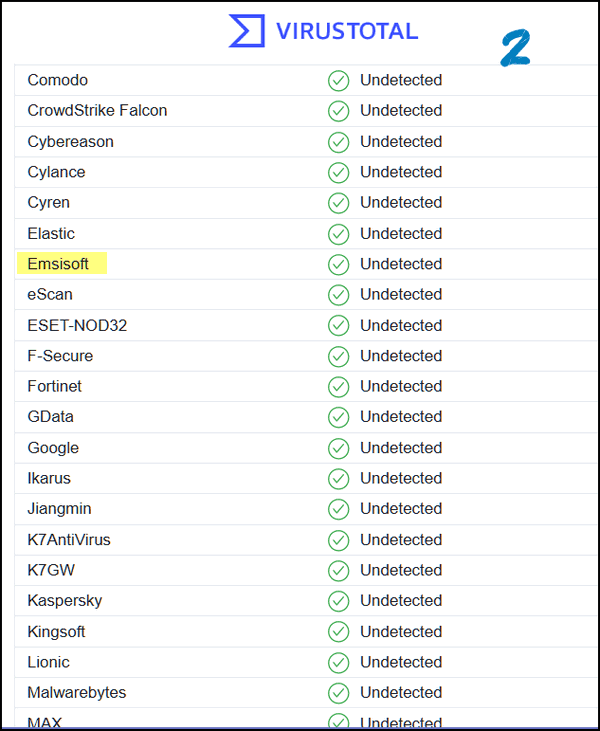
Above: There are more scanners listed, but you get the idea, right? You may, on occasion, see where one or two scanners detected a problem with a file you submitted for examination. In the screenshot directly above, you can see the file was scanned by all 70-plus scanners, and only two found a problem with the file we submitted. Conclusion… the file is safe. When you see this kind of result, you know that the scanner(s) that found a problem is/are reporting a false positive. VirusTotal is always adding more scanners to this list.
You can also use VirusTotal to check out URLs (Website addresses) to see if they’re safe.
Now it’s time for you to check out and/or use VirusTotal by visiting their Website here.
And here’s a tip from good ol’ Darcy and TC: It would be a great idea to bookmark VirusTotal – a day will come when you’ll want to use it.
![]()

Lucy Jupiter and the Forest of Secrets (Part III): The Conclusion
If you missed Part I, you can read it here.
If you missed Part II, you can read it here.
Now, the conclusion of Lucy Jupiter and the Forest of Secrets!
Lucy Jupiter and the Forest of Secrets, Part III: The Conclusion
Chapter 13: A New Beginning
The forest healed.
The Hollow Tree bloomed again.
Sporock, freed from the curse, wept. “I’m sorry,” he whispered.
Lucy forgave him.
At school, Lucy was still quiet. But she smiled more. She walked taller. She became more friendly with her classmates.
And every afternoon, after she finished her homework, she and Millie returned to the forest—not as saviors, not as protectors, but as guardian friends.
Because the land of the Miglets would always need its guardians.
And Lucy Jupiter was ready.
Chapter 14: The Miglet Council
The Miglet village was abuzz. Lanterns flickered in the trees, casting golden light on the mossy paths. Lucy stood before the Miglet Council—the Seven Elders attired in robes woven from spider silk and leaves.
Elder Brindle stepped forward. “Lucy Jupiter, you’ve saved us twice. But the forest still trembles.”
Lucy bowed. “I’ll do whatever I can, Elder Brindle."
Brindle nodded. “There is one more threat. The Blackroot.”
Millie growled. “I thought that was a myth.”
“It’s real,” Brindle said. “A tree corrupted by Puglim long ago. It feeds on fear. And it’s beginning to awaken.”...
Read the conclusion of Lucy Jupiter and the Forest of Secrets here.

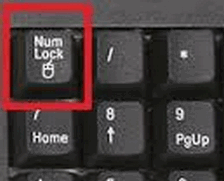 What is the Num Lock key for?
What is the Num Lock key for?
The Num Lock is seldom used; in fact, most of us never use the Num Lock key. Some of us don’t even know where it is or even care where it is. But we can show you a couple of little tricks using the Num Lock key that are useful. So, for those of you who don’t know where the Num Lock key is, it’s at the top of the Numeric Keypad on the right side of your keyboard, usually on the top of the numeric keypad (most laptops do not have numeric keypads – laptop keyboards are a different animal). Take a look – over there on the left. See it? Good!
Did you know that if you hold down the Num Lock key for 5 seconds, you can turn on “Toggle keys”? Toggle keys will cause your computer to beep whenever you accidentally hit the Caps Lock key, the Scroll Lock key, or the Num Lock key.
Go ahead and try it now. Hold down the Num Lock key for five seconds (a light will come on indicating the Num Lock key is depressed – no it’s not depressed because you're pressing on it – or maybe it is!) When the light goes out (in about 5 seconds) a dialog window will appear and tell you that you’ve turned on Toggle Keys, and if you want to keep them on to click OK. Obviously, at this point, you can also cancel turning the Toggle Keys on.
Also, toggling the Num Lock key on and off switches between using the number keys to type numbers like 789456123 and using the number keys as function keys. The function each key performs in function mode (Num Lock key toggled off) is shown on the keys themselves. For instance, pressing certain keys, like “7” for instance, will cause your cursor to jump to the beginning of a line of text. And “4” will backspace one space.
![]()

Sales of the following products and services help support our newsletters, websites, and free computer help services we provide.
Cloudeight Direct Computer Care:
Single Keys, SeniorPass, or Season Tickets - always a great deal. Cloudeight Direct Computer Care is like having PC insurance.
Get more information here.
Emsisoft Anti-Malware: Emsisoft is the only Cloudeight-endorsed and recommended Windows security program. It provides users with a complete antivirus, antimalware, anti-ransomware,
and anti-PUPs solution. We offer single Emsisoft licenses and multi-computer licenses at discount prices. Also, we offer our exclusive Emsisoft with Cloudeight installation & setup.
Get more information here.
Reg Organizer: Reg Organizer is the Swiss Army Knife of Windows tools. It's far more than just a registry optimizer and cleaner... it's a Windows all-in-one toolkit. Reg Organizer helps you keep your computer in tip-top shape and helps you solve annoying Windows problems. Reg Organizer works great with Windows 10
and Windows 11! Get more information about Reg Organizer (and get our special discount prices) here.
MORE IMPORTANT STUFF!
Your InfoAve Weekly Members' Home Page is located here.
Help us grow! Forward this email newsletter to a friend or family member - and have them sign up for InfoAve Weekly here!
Get our free daily newsletter! Each evening, we send a short newsletter with a tip or trick or a computer-related article - it's short and sweet - and free. Sign up right now.
We have thousands of Windows tips and tricks and computer articles posted on our Cloudeight InfoAve website. Our site has a great search engine to help you find what you're looking for, too! Please visit us today!
Help us by using our Start Page. It costs nothing, and it helps us a lot.
Print our Cloudeight Direct Flyer and spread the word about our computer repair service! If you want to help us by telling your friends about our Cloudeight Direct Computer Care service, you can download a printable flyer that you can hand out or post on bulletin boards, etc. Get the printable PDF Cloudeight Direct Computer Care flyer here.

We'd love to hear from you!
If you have comments, questions, a tip, a trick, a freeware pick, or just want to tell us off for something, let us know.
If you need to change your newsletter subscription address, please see "Manage your subscription" at the very bottom of your newsletter.
We received hundreds of questions for possible use in IA news. Please keep in mind that we cannot publish all questions and answers in our newsletters, but we try to answer every single question. We can only use a few in each week's newsletter. If you have a support question about a service or product we sell, please contact us here.
Subscribe to our Daily Newsletter! Get computer tips & tricks every night. Our daily newsletter features a computer tip/trick or two every day. We send it out every night around 9 PM Eastern Time (USA). It's short and sweet, easy to read, and FREE. Subscribe to our Cloudeight InfoAve Daily Newsletter!

We hope you have enjoyed this issue of Cloudeight InfoAve Weekly. Thanks so much for your support and for being an InfoAve Weekly subscriber.
Have a great weekend. Be safe!
Darcy & TC
Cloudeight InfoAve Weekly - Issue #1151
Volume 23, Number 2
October 31, 2025
Not a subscriber? Subscribe to our FREE Cloudeight InfoAve Weekly Newsletter here.

"Cloudeight InfoAve Weekly" newsletter is published by:
Cloudeight Internet LLC
PO Box 73
Middleville, Michigan, USA 49333-0073
Read our disclaimer about the tips, tricks, answers, site picks, and freeware picks featured in this newsletter.
Copyright ©2025 by Cloudeight Internet

